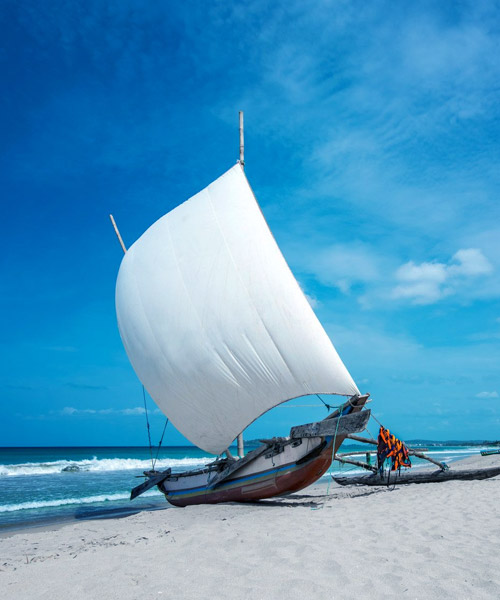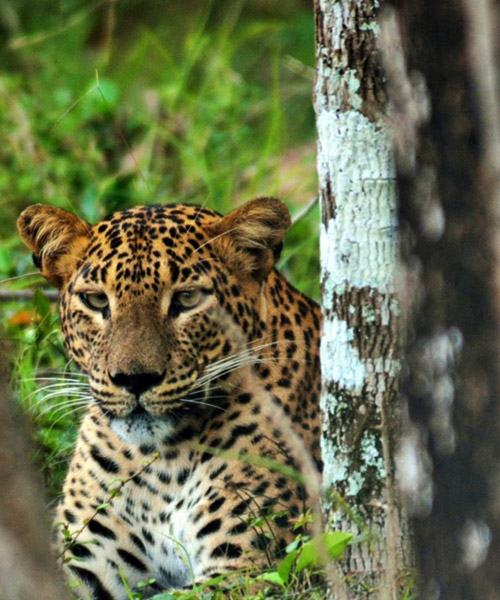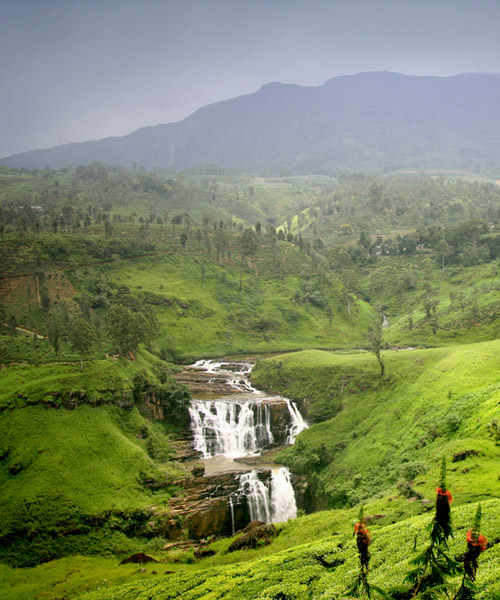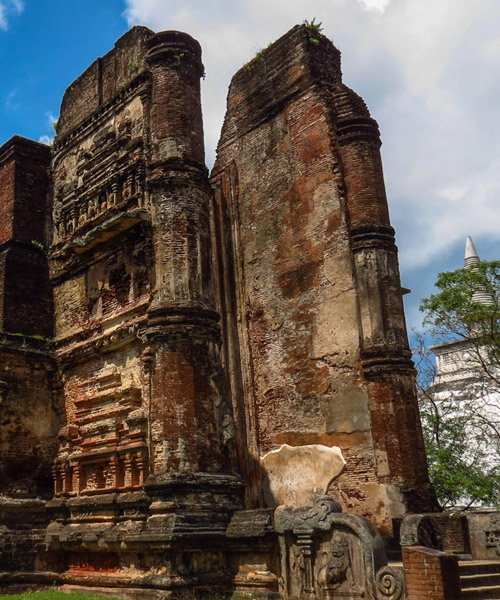BEACHES
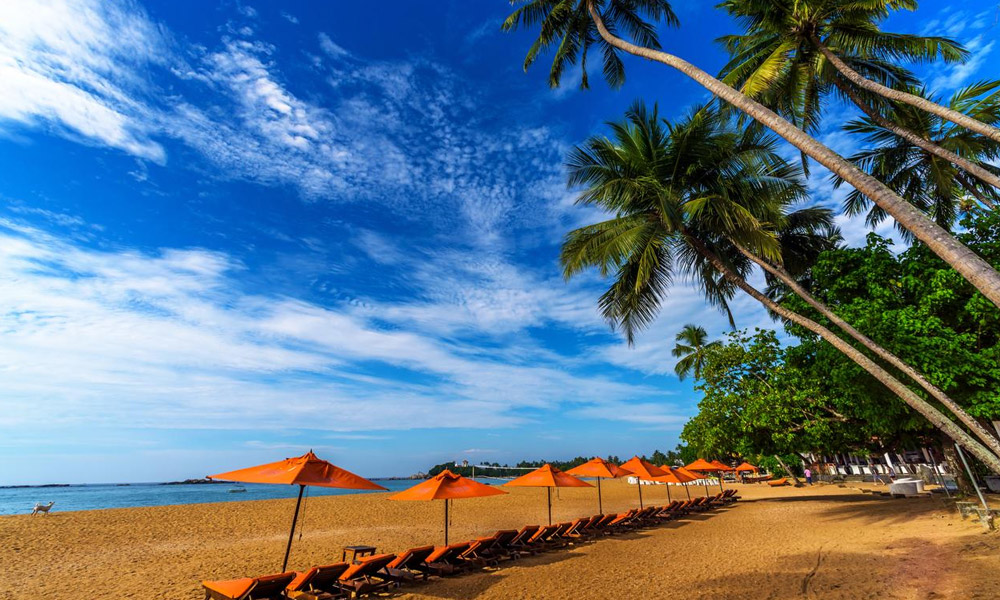
Unawatuna
Situated on Sri Lanka’s south coast roughly 5km from the charming colonial town of Galle, the popular beach resort of Unawatuna has it all – good looks with a pretty beach backed by a striking rocky outcrop, good swimming with a sheltered bay resulting in calm waters year-round, good nightlife with thumping discos and fun activities, and good accommodation options with plenty of hotels to suit all budgets. Its distance from Galle makes it a popular weekend getaway for locals with a towering dagoba offering magical views at sunset.
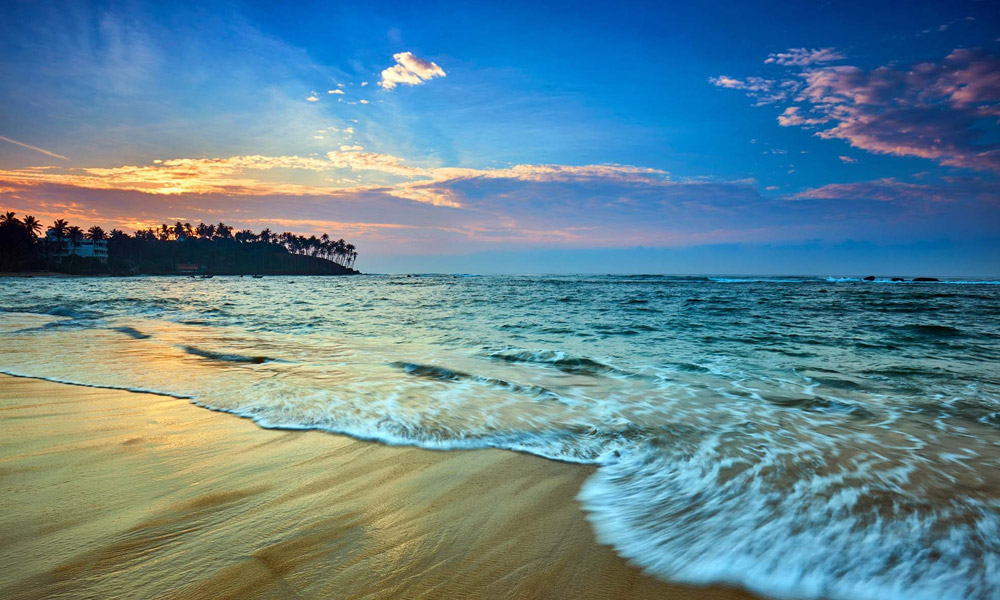
Bentota
Backed by the still waters of the Bentota Ganga and fronting a fine stretch of sandy beach on Sri Lanka’s west coast, Bentota is a first choice for many sun-seekers with a varied range of accommodation and outdoor activities. Waterskiing, jetskiing, sailing and windsurfing are just some of the water-based sports available year-round thanks to the nearby lagoon and it’s also possible to take a boat safari along the Bentota River that connects with the lagoon for a chance to spot aquatic birds and enjoy the mangrove scenery.
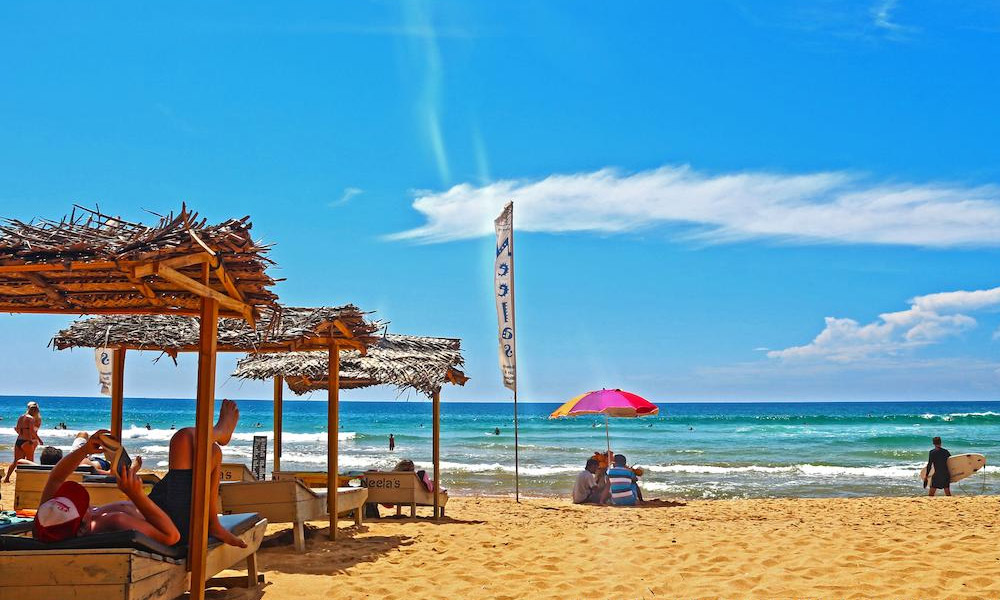
Hikkaduwa
Popular with the hippy crowd back in the 1970s, Hikkaduwa on the west coast is undergoing something of a renaissance with its famous Coral Gardens and beach slowly returning to their former glory after years of over-development. Resorts and hotels have been given a makeover after the devastating effects of the tsunami back in 2004 and the beach town continues to draw visitors with its lively nightlife and the yearly three-day Beach Fest when international DJs spin out tunes all night long out on the beach.
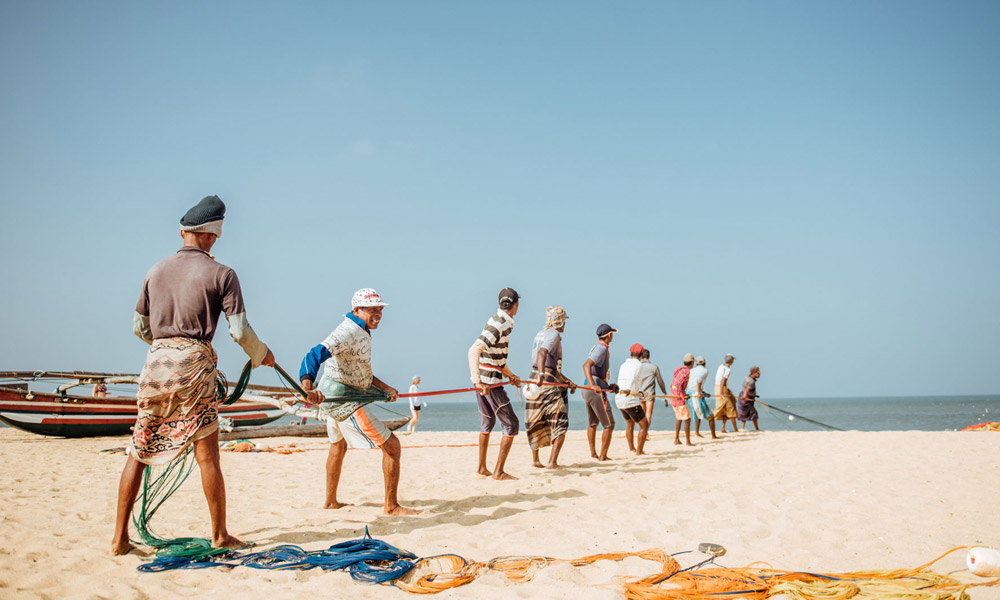
Negombo
Just 10km away from the Bandaranaike International Airport and an hour’s drive from Colombo, the beach town of Negombo on the west coast is ideally located for those in need of a quick break on golden sands before flying home. You’ll find plenty of activities to keep you entertained at this lively resort, from wetland boat trips to kitesurfing, with a few architectural flourishes left over from the colonial era including St. Mary’s Church, the remnants of the old Dutch fort and the attractive mansions along Main Street.

Tangalle
Set along the visually-pleasing south coast marked by rocky promontories and quiet coves, the beaches of Tangalle (also spelled Tangalla) are exactly what you want a tropical beach to resemble with swaying palms, expansive sands and turquoise waters. What makes this region stand out, however, are the attractions further inland that include a giant Buddha and surrounding shrines, the Hoo-maniya blowhole (best seen during the wet season), a bird sanctuary and an ancient monastery carved into rock.
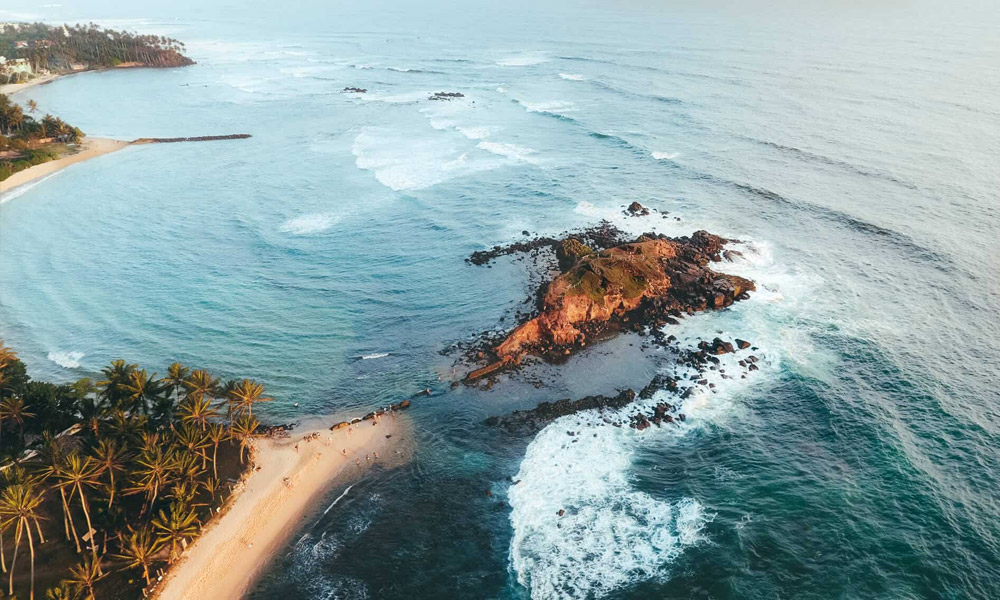
Mirissa
Tucked into a small bay on the south coast, the picturesque arc of sand that forms Mirissa beach is one of Sri Lanka’s most chilled destinations without the overwhelming development found in other spots. Modest guesthouses and rustic restaurants characterise the area and it’s popular with those looking for more relaxed activities. Between the months of December and April it’s also one of the best places in the world to enjoy whale-watching as blue and sperm whales make their migratory journeys around the coast of Sri Lanka.
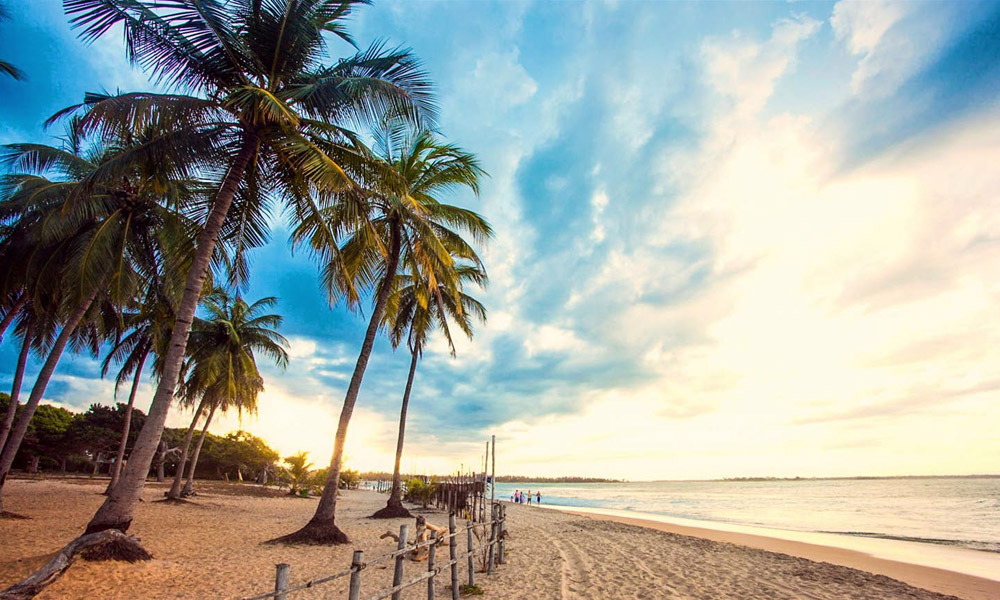
Arugam Bay
Home to Sinhalese, Tamil and Muslim populations, Arugam Bay is easily the most multi-cultural beach resort in Sri Lanka with an eclectic character and laid-back vibe that entices a burgeoning expat community. Situated on the east coast of the island, the bay features an attractive palm-fringed beach and a famous break point that makes it particularly popular with surfers. Mainstream tourism developments have been kept largely at bay so it’s a great place to enjoy a beach without the brashness of other more-established resorts.
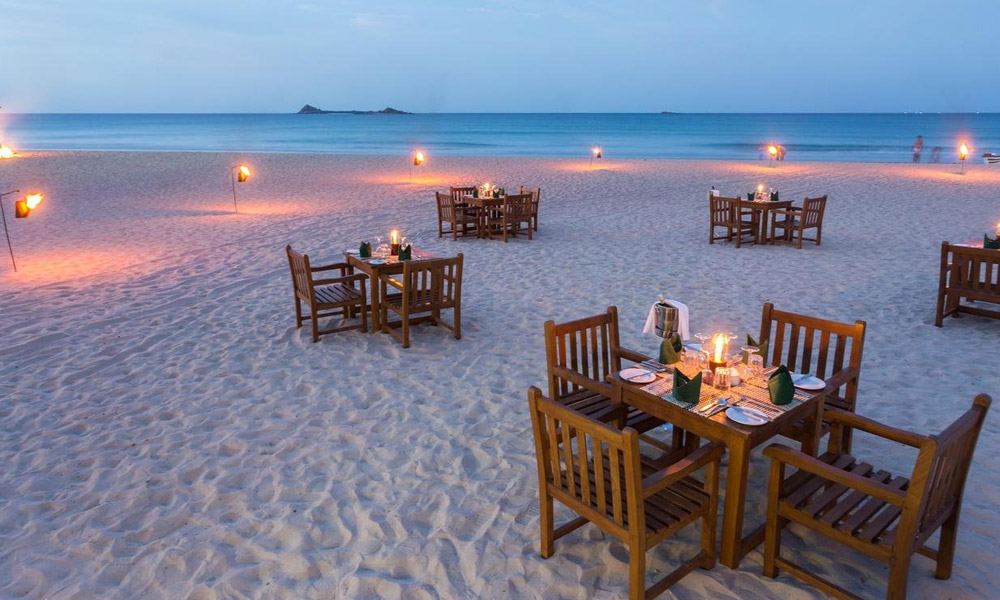
Uppuveli and Nilaveli
Their location on the east coast has meant that the beaches at Uppuveli and Nilaveli have remained blissfully unspoilt due to the decades of civil war that kept visitors and developers out of the region. Palm trees, golden sands, fishing boats and a distinct lack of crowds are what you’ll find here with just a smattering of places to stay, which means it stays peaceful and quiet. Off the coast Pigeon Island and its surrounding coral reefs make a good diving and snorkelling spot, particularly between May and September.
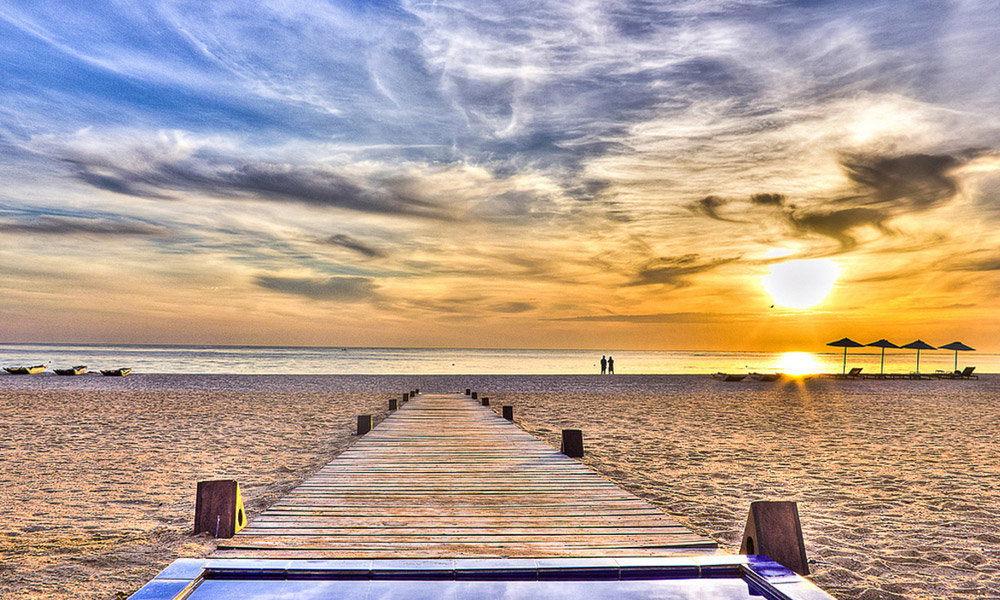
Passekudah and Kalkudah
Nestled along two bays of the same name, the twin beaches of Passekudah and Kalkudah are the perfect spot for swimming thanks to the gently sloping seabed and calm waters. Popular in the 70s and 80s before the outbreak of civil war, Passekudah was once one of the most developed beach resorts on the east coast and is set to be once again with on-going development of hotels and facilities while Kalkudah remains largely deserted with the vibe of a sleepy backwater and plenty of private spots to be found.
WILD LIFE OF SRI LANKA
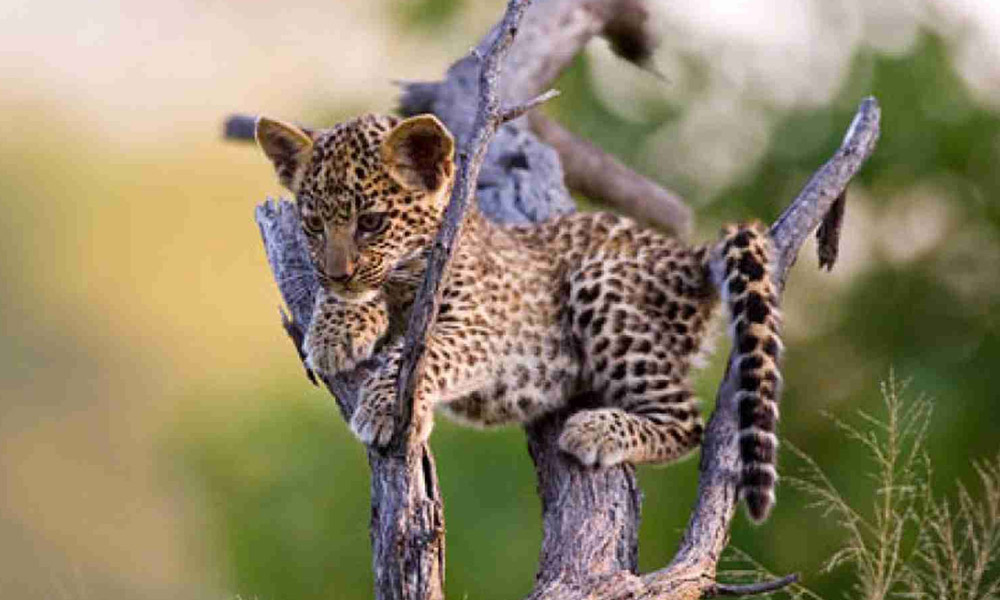
Yala National Park
The most famous national park in Sri Lanka, Yala is home to 215 bird species and 44 mammal species. Expect to see roaming elephants, herds of sambar deer, crocodiles and buffalo. What’s more, the park has the highest concentration of leopards in the world.
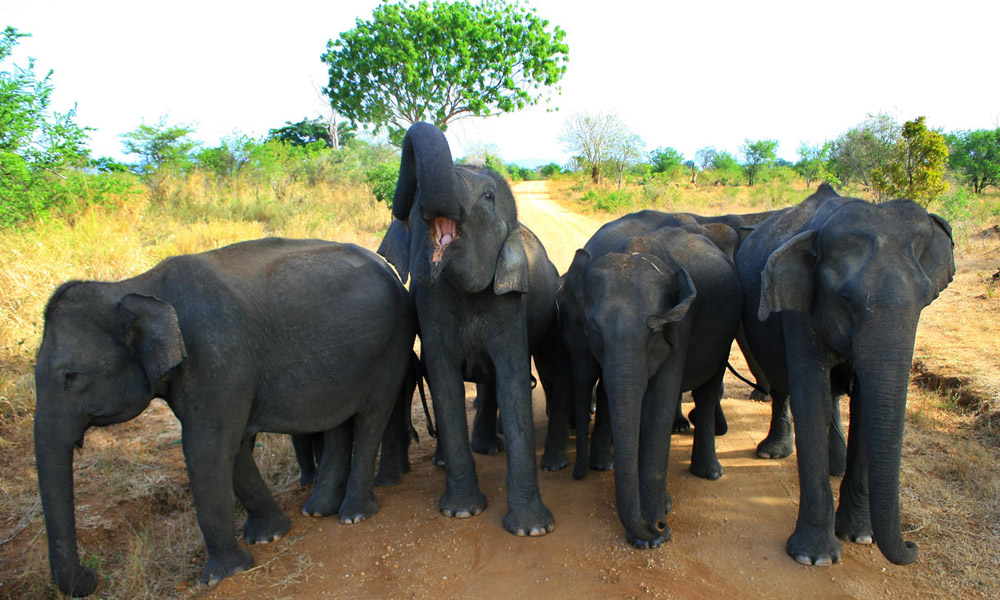
Udawalawe National Park
Framed by the soaring Central Highlands, Udawalawe is one of the best places in the world to see wild elephants. Herds are often seen roaming in numbers of up to 100, with other mammals in the park including water buffalo, wild boar, sloth bears, spotted deer and the endemic toque macaque.
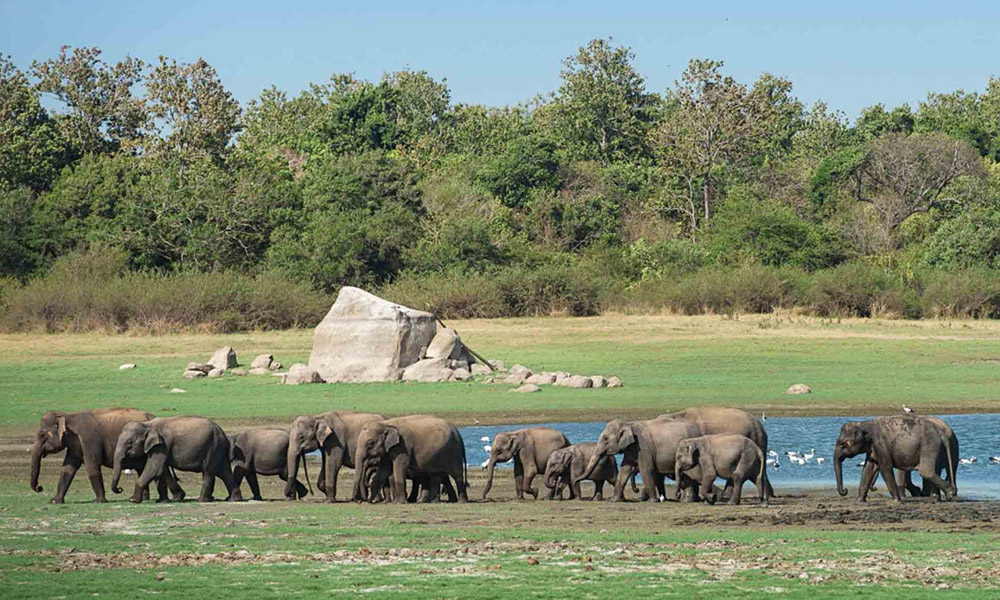
Minneriya National Park
As part of Sri Lanka’s elephant corridor, large numbers of elephants migrate across the country to Minneriya every year. Known as ‘The Gathering’, as many as 300 come to the park’s reservoir in the largest meeting of Asian elephants anywhere in the world.
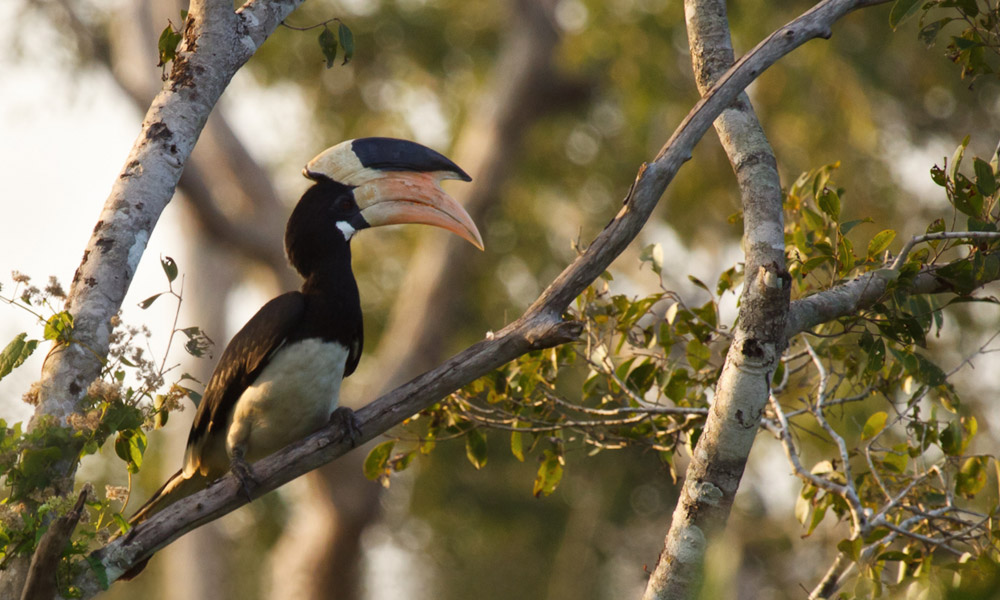
Wilpattu National Park
Translating to ‘natural lakes’ in Sinhala, Wilpattu’s most prominent feature is its wetlands. Known as ‘Villu’, the park has over 50 lakes surrounded by grassy plains. Despite being Sri Lanka’s largest national park, visitor numbers remain low and give the park a true sense of wilderness.
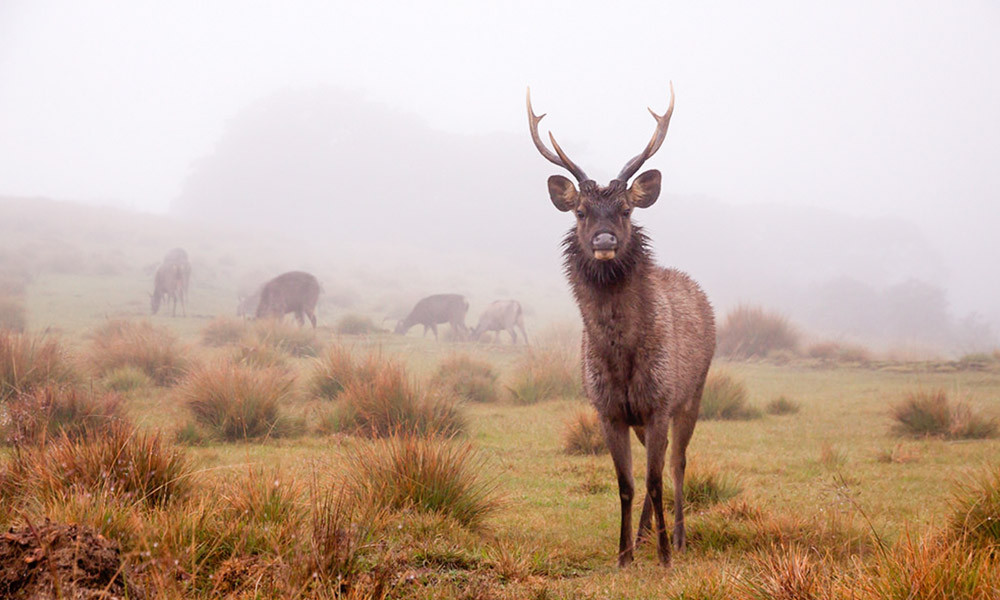
Horton Plains National Park
Set over 2,000 metres above sea level, the Horton Plains feel a world apart from the rest of Sri Lanka. Large areas of the park are covered in pristine cloud forest, with dramatically plunging cliffs at its southern boundary. Home to a variety of endemic species, it’s one of the best places for bird watching.
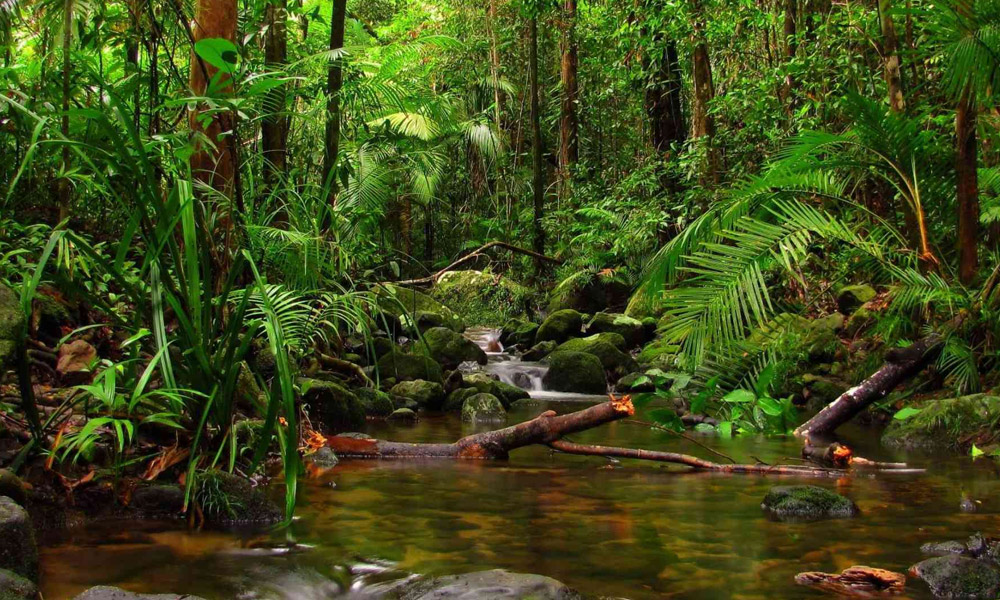
Sinharaja Forest Reserve
World Heritage-listed Sinharaja Forest Reserve is a biodiversity hotspot. Containing Sri Lanka’s last area of primary tropical rainforest, it’s home to over 50% of the country’s endemic species of mammals and butterflies, as well as many types of reptile, insect and rare amphibians.
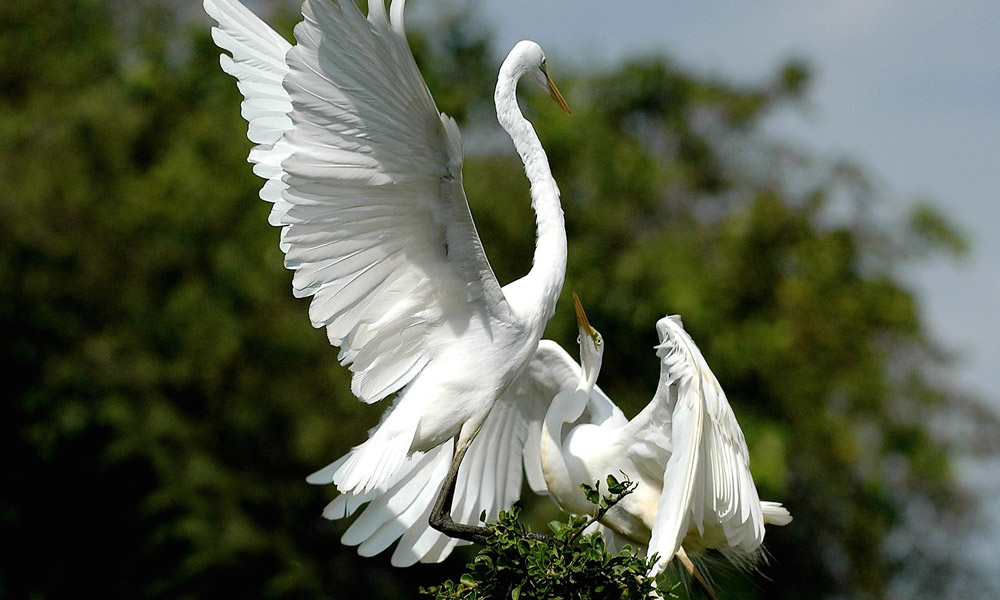
Bundala National Park
One of Sri Lanka’s best destinations for bird watching, Bundala protects an important area of coastal wetland. Almost 200 bird species have been recorded here, including ibis, pelicans and huge flocks of greater flamingos. Visitors can also spot crocodiles, elephants, turtles and a variety of other fauna.
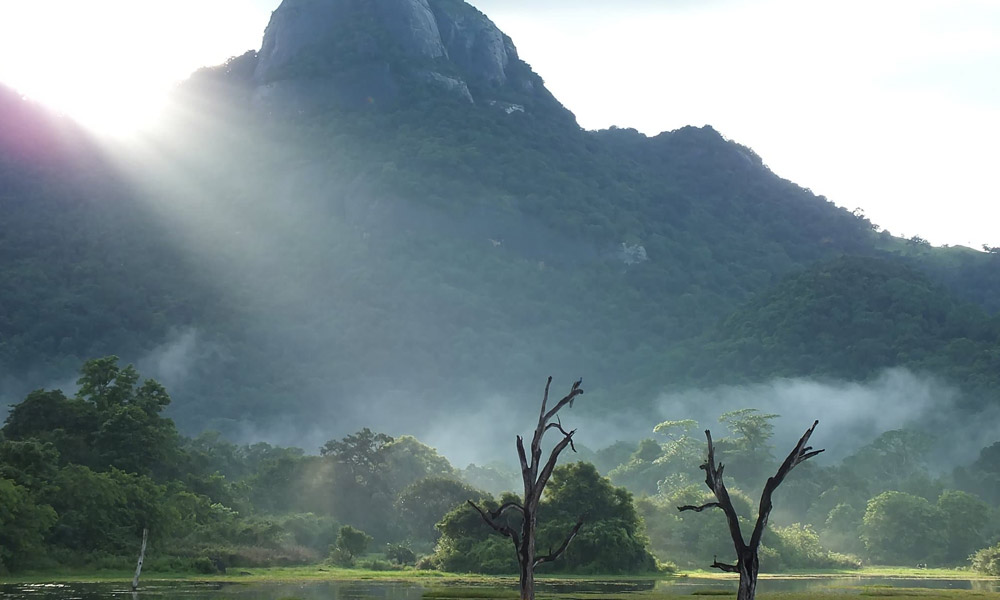
Gal Oya National Park
The only national park in Sri Lanka where you can take a boat safari, Gal Oya protects the vast Senanayake Samudra Reservoir. The park is home to 32 mammal species, with a visitor highlight being the sight of herds of elephants swimming across the reservoir from one island to another.
HILL COUNTRY
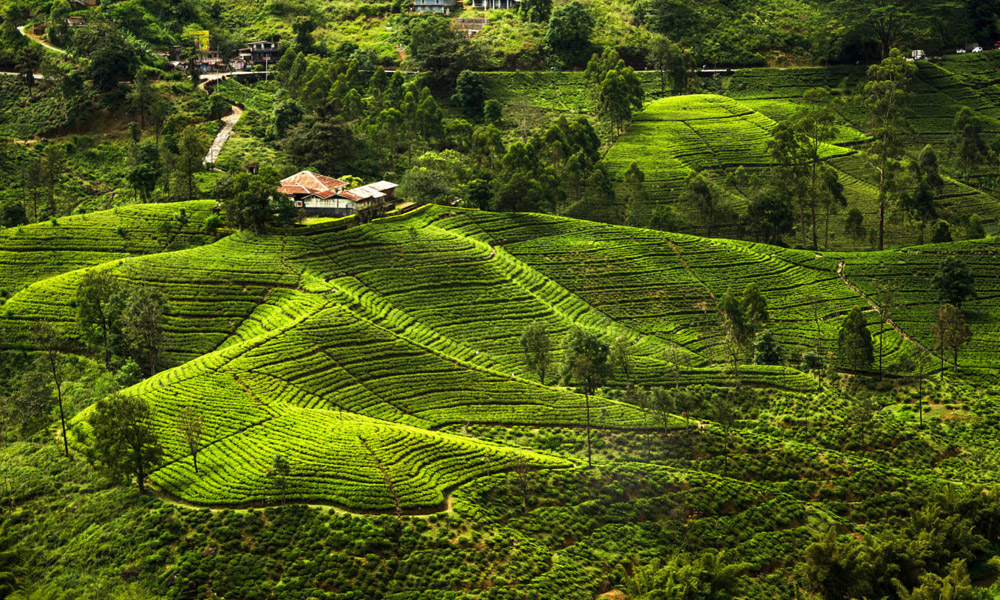
Nuwara Eliya
Nuwara Eliya – Sri Lanka’s premier hill resort with a fine bracing mountain climate, Nuwara Eliya is also the heart of Sri Lanka’s tea country, producing some of the world’s best tea. The mountain slopes and valleys are a carpet of velvety green tea plantations, interspersed with gushing streams and tumbling waterfalls. Red or green roofed plantation bungalows, English country style homes and hotels with lovely flower gardens, a fine 18 hole golf course and a racecourse gives Nuwara Eliya a decidedly British character.
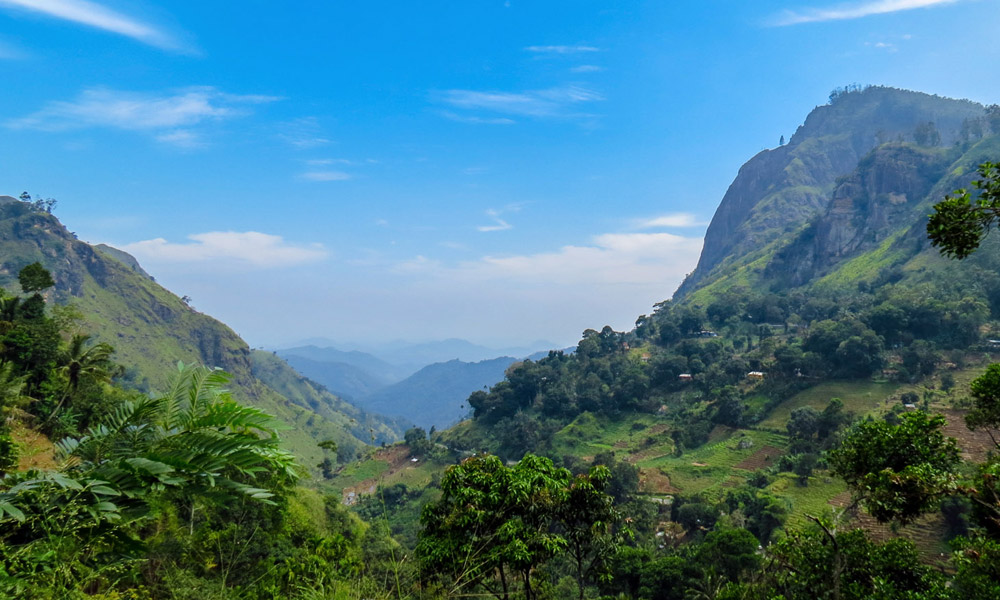
Ella
Ella is one of the most famous places in the tropical island Sri Lanka. It’s well-known for many reasons; but primely, the natural paradise around the location and tourist town there that becomes party central once dusk falls. The Ella town itself is surrounded by the beautiful hills of the Central highlands; covered in rolling green tea estates, the tall trees of cloud forests, and interesting natural formations. The town is a delight to be in as it maintains its originality and rural feel while still catering to the thousands of tourists that visit it during seasonal highs.
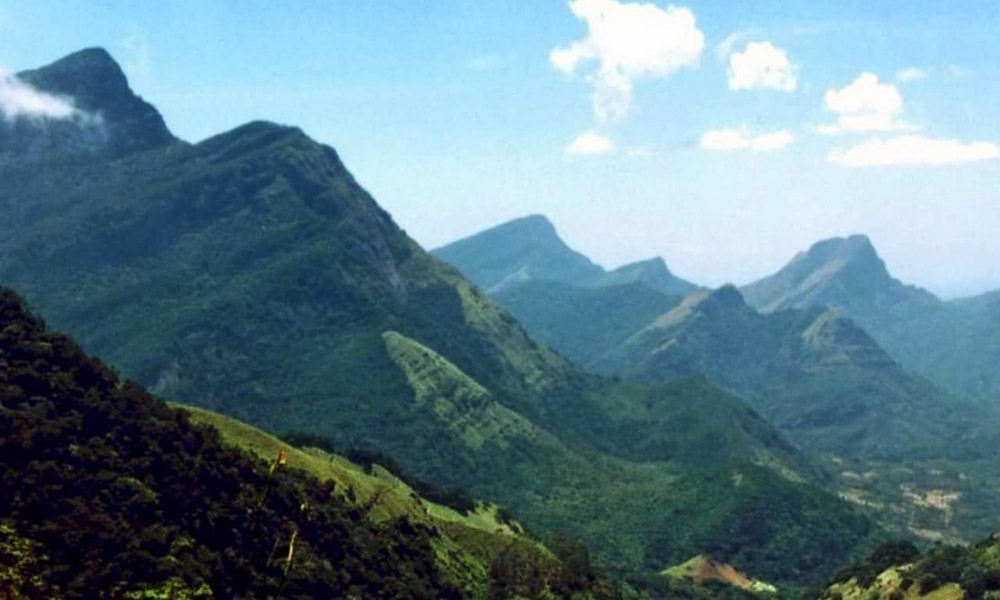
Knuckles Mountain Range
Knuckles range also called Dumbara mountain range is located off Kandy, in the northern end of Central Highlands of Sri Lanka. To the south and east of the mountain range is Mahaweli river basin while to the west are Matale plains. The Knuckles range is one of the loveliest nature attractions of Sri Lanka. The changing terrain of grasslands, rugged mountain peaks interspersed with streams and cascading waterfalls make Knuckles mountain range that covers an area of 18512 hectares the trekker’s paradise.
HERITAGE SITES
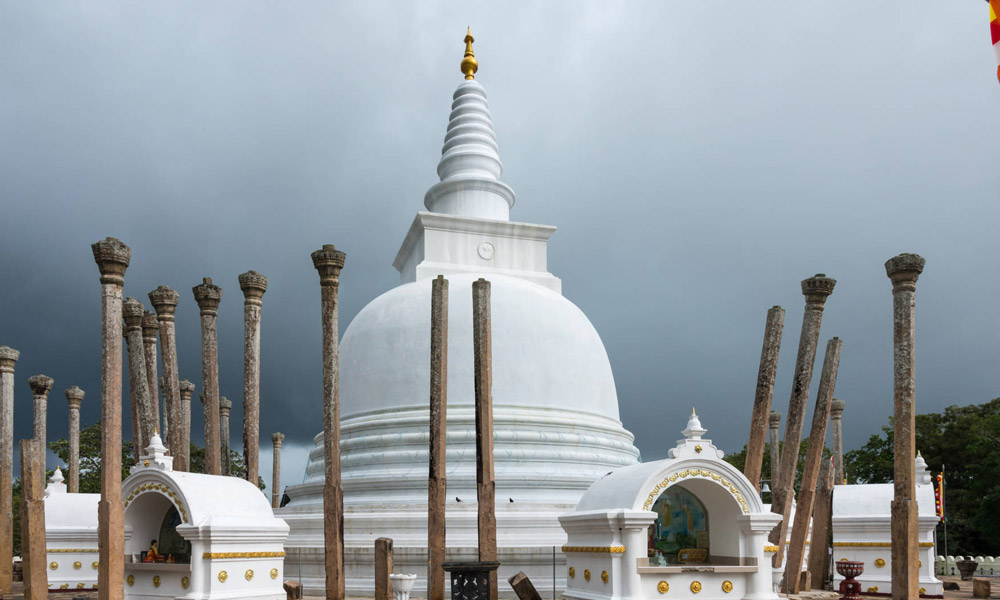
Anuradhapura
Part of the Cultural Triangle, Anuradhapura was ancient Sri Lanka’s first capital and was founded during the fourth century BC by Sinhalese King Pandukabhaya. The city was established around the sacred Sri Maha Bodhi tree, which is said to be the oldest tree planted by hand in the world. Of huge spiritual meaning to Buddhists, the tree is believed to have grown out of the sapling of the original fig tree in India under which Buddha attained enlightenment. Mihintale, with its pristine white stupa among lush forest is set to the east of the ancient city and is considered to be the cradle of Sri Lankan Buddhism.
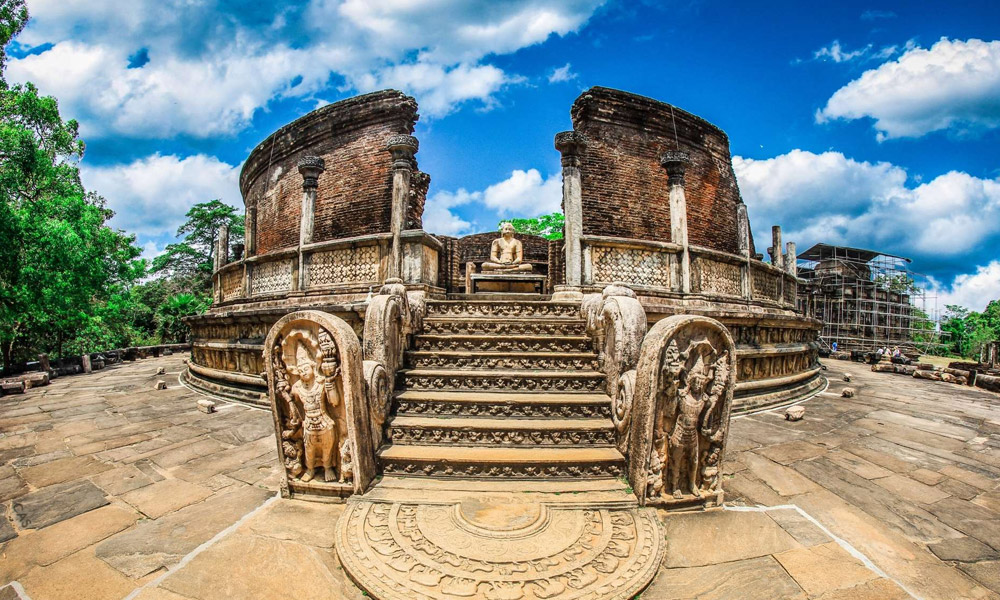
Polonnaruwa
Second to Anuradhapura and on a smaller scale, Polonnaruwa was the capital of the Chola and Sinhalese kingdoms some 1,000 years ago. Today it is an impressive archaeological site on the Cultural Triangle, packed with ancient structures including tombs, temples and stupas. References to Buddha are ever present here including the Polonnaruwa Vatadage, a circular structure containing a statue of Buddha in the centre, and Gal Vihara, carved out of a single rock and featuring a large 15ft statue of the posture known as ‘sitting Buddha’.
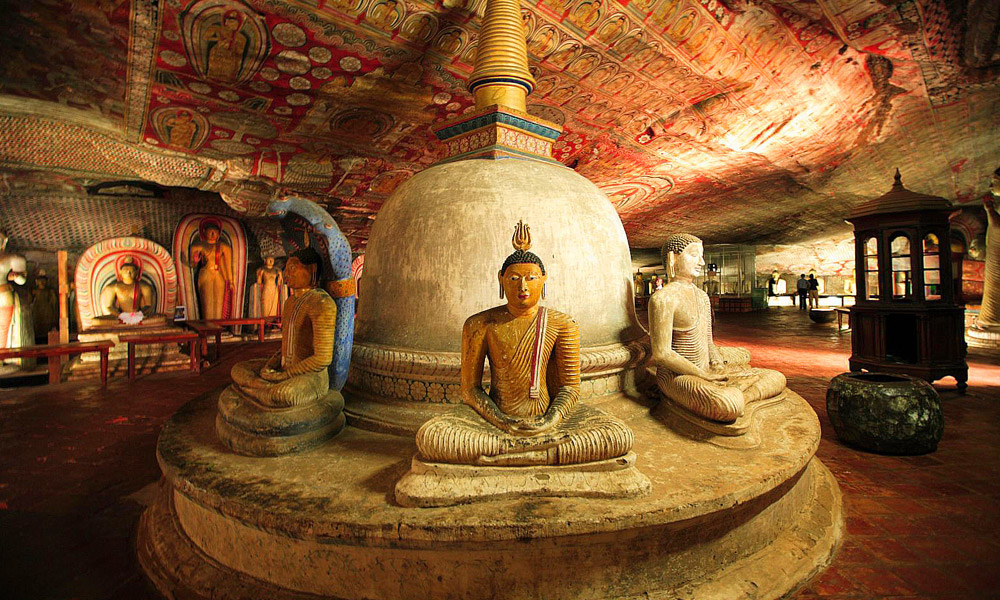
Dambulla
Dambulla’s Buddhist temple complex is one of the best-preserved in Sri Lanka. The five caves are located at the top of a steep hill and contain an impressive collection of Buddhist murals and statues, including a 15-metre-long reclining statue of the god. The caves’ history is thought to date back as far as the first century BC when King Valagam Bahu took refuge here and had the interior of the caves carved into temples. This site is one of Sri Lanka’s highlights for tourists and Buddhist pilgrims alike.
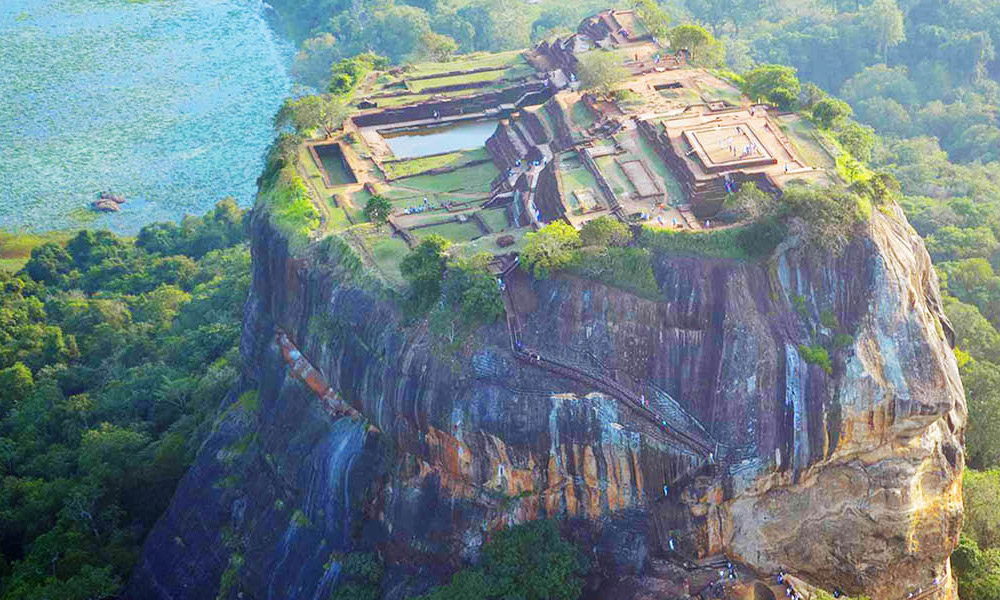
Sigiriya
Sigiriya rock fortress is a 370-metre-high rocky outcrop in the heart of the Cultural Triangle. The renowned rock citadel was built during the fifth century under King Kassapa, abandoned for centuries and only rediscovered by a British archaeologist in the late 19th century. A climb
to the top offers stunning views of the surrounding lush landscape and an insight into the peoples that once lived here while the beautiful water gardens and historic museum at the bottom are also worth visiting.
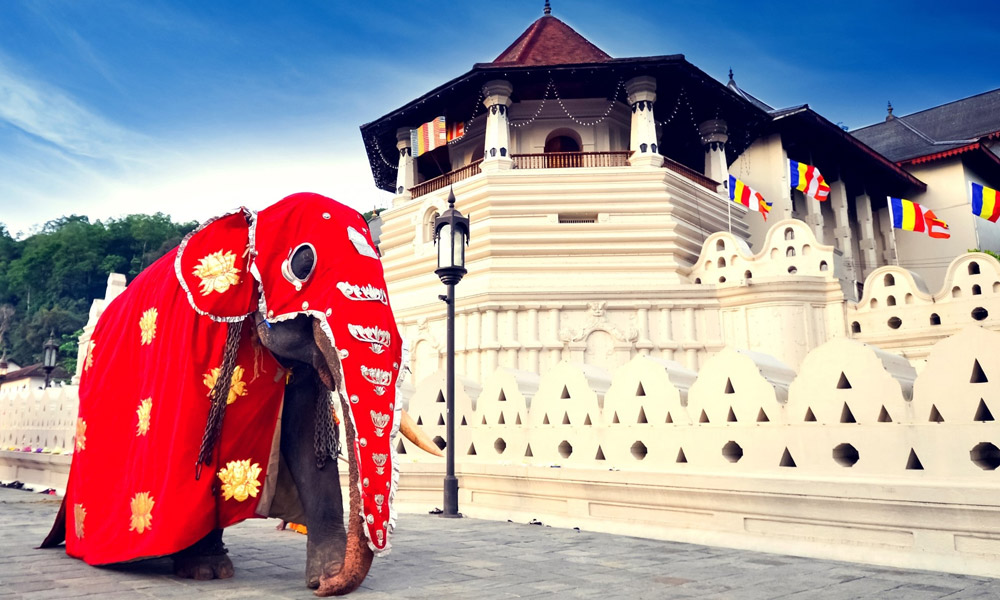
Kandy
Kandy, once an impregnable fortress, was the capital of the last Sinhalese kingdom. Today, this bustling city is Sri Lanka’s cultural centre and home to the country’s holiest site, the Temple of the Tooth, said to contain the tooth relic of Buddha. The temple is set on the shores of a beautiful
lake in the midst of town. Just a short walk away from the temple is the British Garrison Cemetery, established in 1817 for the British nationals that died in Ceylon. Kandy is also known for its quaint old quarter, cultural performances and interesting museums.
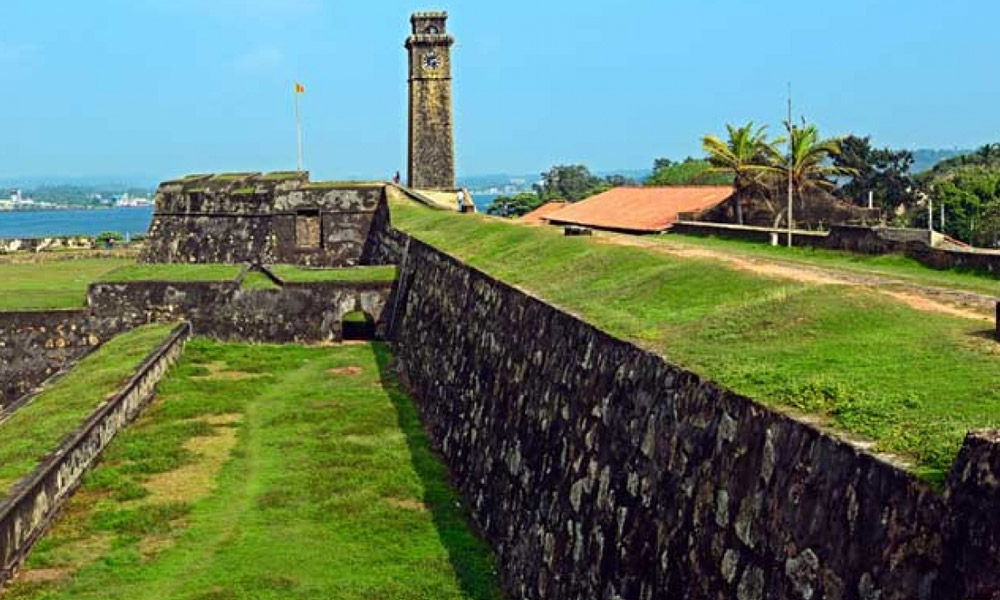
Galle
Galle – said to be the famous Tarshish of the Bible where King Solomon obtained gems and spices, this “Living” UNESCO World Heritage Site is the port where the Portuguese first landed in Sri Lanka in 1505. Captured and fortified by the Dutch who ruled maritime Sri Lanka in the 17th and 18th centuries, the city still retains the air of old Holland. Within the well preserved 90 acre fort and ramparts built in 1663 are old Dutch churches and monuments with armorial bearings, an imposing crested and monogrammed gateway dated 1669, many well preserved old Dutch houses and narrow alleys still bearing Dutch names. The New Oriental Hotel, built for a Dutch governor in 1684, a colonial gem now converted to the internationally renowned Amangalle Hotel and several other excellent boutique hotels are testimony to the importance of this location.
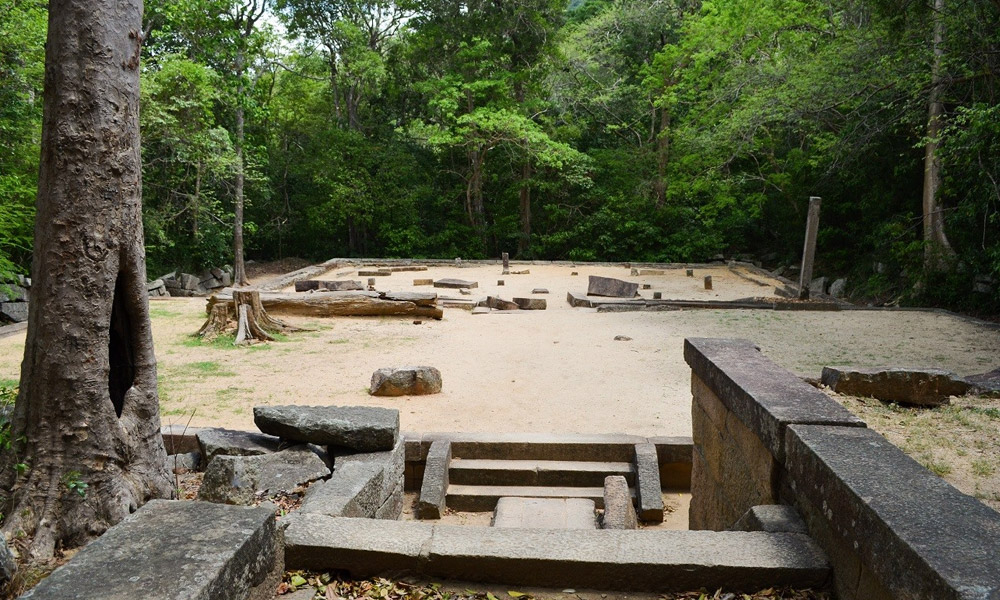
Ritigala
Ritigala – the monastic complex on the lower slopes of Ritigalakanda (Ritigala Mountain)has some of the most distinctive ruins in Sri Lanka. When Buddhism became established on the island, Ritigala was selected as a suitable spot for the construction of Vihares, or temples and the first, the “Lanka Vihare”, was founded in the second century BC. A peculiarity of Ritigala is that though it is located in the Dry Zone, many temperate wet Zone plants grow on the summit. It is also one of the most known habitats for a variety of herbs, roots, stems and flowers used in Ayurveda. Today, this forest hermitage is the abode of several monks who use hollowed out caves and rough types of habitation as a retreat for meditation. The upper reaches and summit of the 766m rock is a Strict Nature Reserve but the monastic complex and caves can be visited.
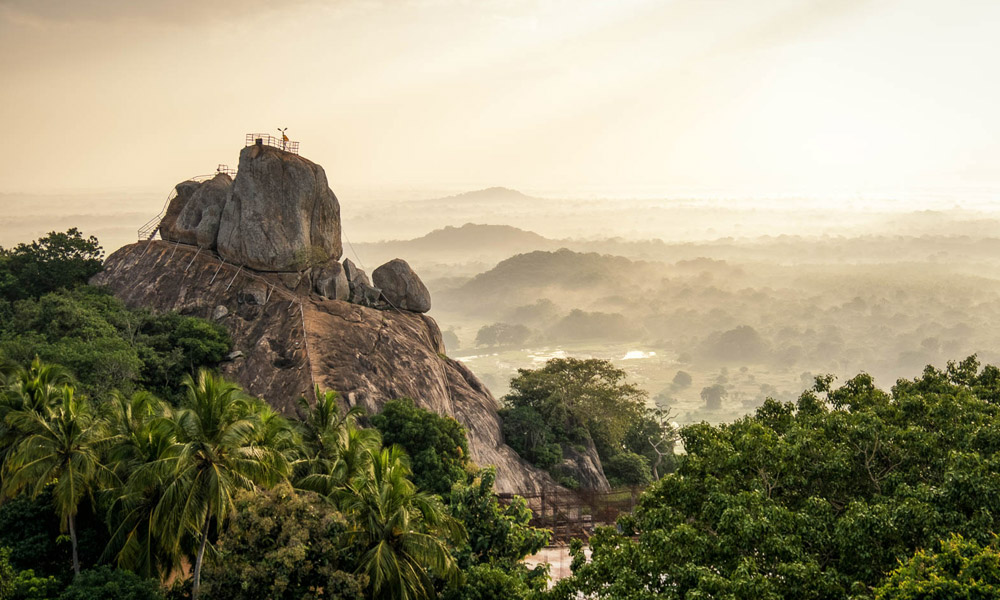
Mihintale
Mihintale – a little away from Anuradhapura, the forest clad mountain is of great spiritual significance to Buddhists because it was the place where Buddhism was introduced to Sri Lanka in the 3rd century BC. Mihintale has many different points of interest – the 1840 ancient granite steps, dagaba’s, the relic house and monks refectory, the assembly hall, meditation rock, caves and ponds. The climb to the summit is also interesting from a scenic aspect for stunning views of the surrounding countryside.


